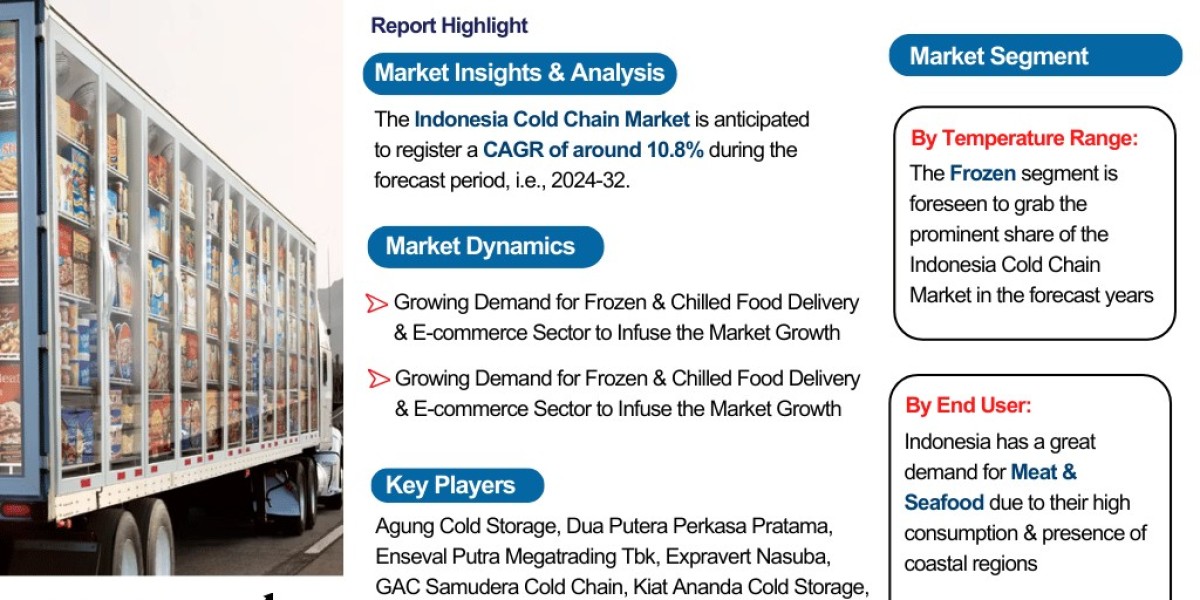Introduction
Have you ever wondered how fresh seafood from Indonesia reaches your plate in another country? Or how vaccines remain effective during transportation? The answer lies in the cold chain—a temperature-controlled supply chain that ensures perishable goods like food, pharmaceuticals, and chemicals remain fresh and safe from production to consumption.
With Indonesia’s cold chain market projected to grow at a CAGR of 10.8% from 2024 to 2032 (as per The Report Cubes), this industry is becoming increasingly vital. But what exactly is a cold chain, and why is it so important? Let’s explore.
What is a Cold Chain?
A cold chain is a logistics network that maintains a controlled temperature environment for perishable products throughout their journey—from manufacturing and storage to transportation and delivery. It involves:
- Refrigerated storage (cold warehouses)
- Temperature-controlled transport (reefer trucks, ships, and planes)
- Monitoring systems (IoT sensors, GPS tracking)
Key Products Requiring Cold Chain
- Food & Beverages – Meat, dairy, seafood, fruits, and vegetables.
- Pharmaceuticals – Vaccines, insulin, biologics.
- Chemicals – Certain industrial chemicals requiring temperature control.
Why is the Cold Chain Important?
1. Reduces Food Waste
About 30% of food produced globally is wasted, often due to poor storage and transportation. A strong cold chain ensures food stays fresh longer, reducing losses.
2. Ensures Vaccine & Medicine Efficacy
Many life-saving drugs, including COVID-19 vaccines, require strict temperature control (some as low as -70°C). Without a cold chain, these medicines lose potency.
3. Supports Global Trade
Indonesia is a major exporter of seafood, fruits, and poultry. A reliable cold chain helps Indonesian products reach international markets while maintaining quality.
4. Improves Food Safety
Temperature abuse can lead to bacterial growth (like Salmonella or E. coli). Cold chains prevent spoilage and contamination.
Indonesia’s Cold Chain Market Growth (CAGR 10.8% by 2032)
According to The Report Cubes, Indonesia’s cold chain market is set for rapid expansion, driven by:
1. Rising Demand for Perishable Goods
- Growth in e-commerce grocery delivery (like Sayurbox, Segari).
- Increasing consumption of frozen and processed foods.
2. Government & Private Sector Investments
- Indonesia’s National Cold Chain Development Program aims to reduce food loss.
- Companies like PT. Mitra Cold Chain Solutions and Cold Storage Indonesia are expanding infrastructure.
3. Expansion of Pharmaceutical Cold Chain
- Post-pandemic, demand for vaccine storage (like Pfizer’s ultra-cold requirements) has surged.
4. Technological Advancements
- IoT & AI-powered monitoring for real-time temperature tracking.
- Solar-powered cold storage for rural areas.
Challenges in the Cold Chain Industry
Despite growth, Indonesia’s cold chain sector faces hurdles:
1. High Energy Costs
Refrigeration requires significant electricity, making operations expensive.
2. Infrastructure Gaps
Many rural areas lack cold storage facilities, leading to post-harvest losses.
3. Lack of Skilled Workforce
Proper handling of cold chain logistics requires trained professionals.
4. Last-Mile Delivery Issues
Maintaining temperature control during the final delivery stage remains a challenge.
Future Trends in Cold Chain Technology
1. Blockchain for Transparency
Tracking products from farm to consumer using blockchain ensures authenticity and reduces fraud.
2. Green Cold Chain Solutions
- Hydrogen-powered refrigerated trucks
- Eco-friendly refrigerants to reduce carbon footprint
3. Automated Warehouses
Robotics and AI-driven cold storage for faster, more efficient operations.
4. Expansion of Cold Chain-as-a-Service (CCaaS)
Startups offering on-demand cold storage for small farmers and businesses.
How Can Consumers Support Cold Chain Efficiency?
- Buy from Brands with Strong Cold Chain Practices – Look for certifications like HACCP or ISO 22000.
- Reduce Food Waste at Home – Properly store perishables in refrigerators.
- Support Local Cold Chain Startups – Many Indonesian startups are innovating in this space.
Conclusion
The cold chain is the unsung hero behind fresh food, effective medicines, and global trade. With Indonesia’s market growing at 10.8% annually, advancements in technology and infrastructure will play a crucial role in shaping the industry’s future.
Whether you’re a consumer, business owner, or investor, understanding the cold chain helps you make informed choices—ensuring quality, safety, and sustainability in the products you rely on every day.








